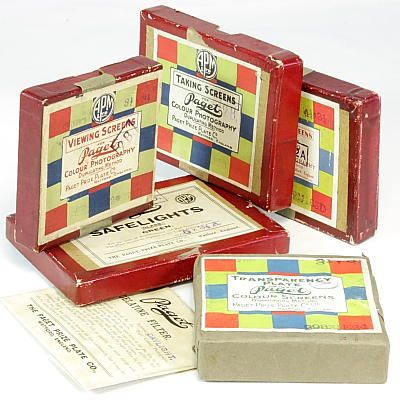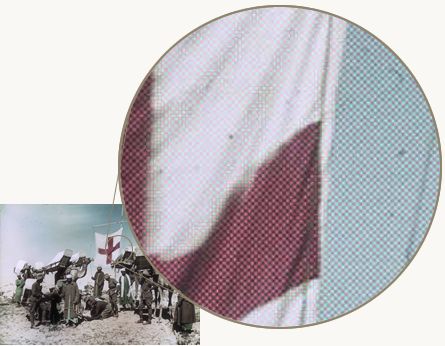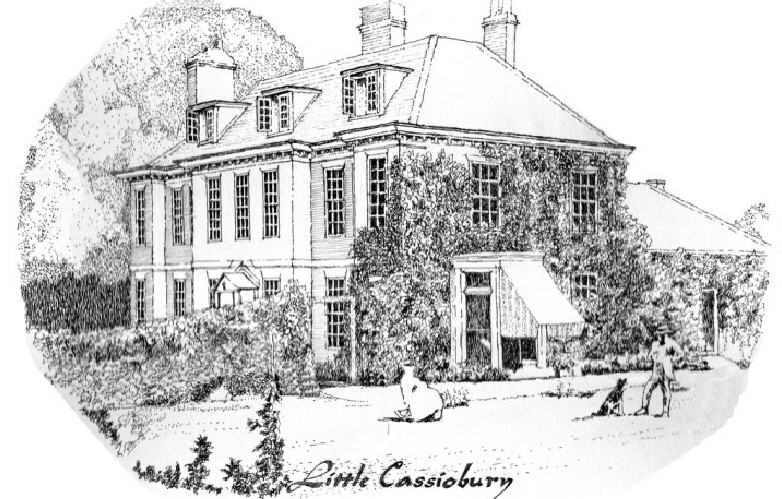The Whitfield Family
Ada H. Whitfield
1866, in Kensington
district, Middlesex, England
George
Corpe Whitfield
Laura Caroline (Bishop) Whitfield
Artist / Painter
1881:
15 Alexander Villas, Brighton, Sussex
- England Birth Index
(1Q1866 vol 1a p115)
- David Simkin
Charlotte E. Whitfield
1858/9, in Kensington, Middlesex,
England
George
Corpe Whitfield
Laura Caroline (Bishop) Whitfield
Teacher of Singing
1881: 14
Sandringham Gardens Uxbridge Road, Middlesex
Eva Margaret M. (Whitfield) Smyth
1867, in Kensington
district, Middlesex, England
George
Corpe Whitfield
Laura Caroline (Bishop) Whitfield
Hugh St George Smyth, in
1902 in Uckfield
district, Sussex, England
1881:
15 Alexander Villas, Brighton, Sussex
- England Birth Index
(3Q1867 vol 1a p135)
- England Marriage Index
(3Q1902 vol 2b p242)
George Corpe Whitfield
1832/3, in Paddington, London,
Middlesex, England
Laura Caroline Bishop in 1857 in Basingstoke district,
Hampshire, England. Laura was born in 1834, in Maidenhead, Berkshire, the
daughter of a surgeon, and died in 1904 in Eastbourne, Sussex.
An early photographer, and later
a partner in the Woodbury Permanent Photographic Printing Company.
George initially established a photographic portrait studio of his own on
Regent Street, London, and then, in 1856, joined forces with Samuel Lock to
form Lock & Whitfield, a fairly prominent firm in early photography,
with studios in London (178 Regent Street) and Brighton (109 King's Road).
In an advertisement placed in a Brighton newspaper, dated 20 September 1864,
Lock & Whitfield offered to take "carte de visite and every description
of photograph, colored or uncolored, on paper, ivory or porcelain." By 1867,
Lock & Whitfield had fixed the price of twenty carte de visite portraits
at �1.1s.6d. Lock & Whitfield probably employed a manager to run their
Brighton studio in the 1860s, but by the time of the 1871 census, George C.
Whitfield was living at Upper Rock Gardens, Brighton with his wife and five
children. Samuel Lock took up residence in Brighton in 1877, but died 4
years later on 9th May 1881. Lock & Whitfield's Brighton studio was
taken over by another chain of photographers, Debenham & Co in 1886. The
studio in Regent Street carried the name of Lock & Whitfield until
around 1895. Perhaps the most important work of this company is found in the
book Men of Mark; A Gallery of Contemporary
Portraits (buy
used - if you can afford it!) which contains photo portraits of many
of the prominent men of late 19th century Britain. Other works can be found
at the National
Portrait
Gallery and the British
Library. In the 1860's, Walter Woodbury invented a means of mass
producing identical photographs known as the Woodburytype,
or Woodbury Process, a photo-mechanical printing process which has true
continuous half-tones and to the untrained eye is indistinguishable from an
actual photograph. George Whitfield became a partner in the Woodbury
Permanent Photographic Printing Company. William Crawford's book on
photographic processes
quotes a visitor to the Woodbury Company in the 1880s noting that eight men
in the printing shop each worked seven presses containing four printing
moulds each to produce a total of 30,000 portraits in a single day. The
presses were mounted on rotating tables so that the worker could turn round
the table and attend to each press in turn.
1881: 14
Sandringham Gardens Uxbridge Road, Middlesex
1901: Watford, Hertfordshire; Age 68; Born in Paddington, London;
Occupation: Retired Photographic Plate & Paper Manufacturer
- 1881 census; 1901 census
- England Marriage Index
(3Q1857 vol 2c p281); Laura details from 1881 census and from David
Simkin
- 1881 census; Keith
Hazell; History
of
Photography in Brighton (by David Simkin)
George Sydney Whitfield
1860, in Kensington, Middlesex,
England
George Corpe
Whitfield
Laura Caroline (Bishop)
Whitfield
George attended St John's
College, in Hurstpierpoint, Sussex. By co-incidence, one of his masters
there was Gorge Osmund Lees Thomson who would become his brother-in-law
fifteen years later after both had married Plumbe sisters.
Harriet
Charlotte Plumbe on 30 June 1886, in Cookham
district, Berkshire, England
In 1881, an assistant at his
father's photographic printing company; in1901 a manufacturer of
photographic plates andpaper.In September 1901, the Paget
Prize Plate Company was registered, of which George and his father
were two of the four directors.
 |
|
Screens and Plates required for the Paget
color process.
|
British Journal of Photography 13 September
1901 p588
The Paget Prize
Plate Company, Ltd—This company has been registered by Stephenson and
Co., of 31 Lombard street, E.C., with a capital of £80,000 in £1 shares,
of which £48,000 are 6 per cent. preference shares. The objects of the
company are to adopt an agreement with G. C. Whitfield, W. J. Wilson, G.
S. Whitfield, and E. A. Whitfield, for the acquisition as a going
concern of the business now carried on at Watford and elsewhere, under
the style or firm of the Paget Prize Plate Company, Ltd., and to carry
on the business of inventors and manufacturers of and dealers in
photographic apparatus, materials, and accessories of all kinds,
chemists and druggists, drysalters, oil and colour merchants, assayers,
carpenters, printers, glaziers, lithographers, engravers, designers, and
dealers in cements, papers, glass, oil, and paint, pigments, varnishes,
drugs, dye wares, and chemical, scientific, and artistic apparatus, etc.
There will be no initial public issue. The number of directors is to be
not less than two nor more than seven. The first are G. C. Whitfield, W.
J. Wilson, G. S. Whitfield, and E. A. Whitfield. Qualification £1000.
Remuneration as fixed by the company. Registered office, St.
Albans-road, Watford, Herts.
George invented an early colour photography process named the Paget
process. This was patented in Britain in 1912 and first sold in 1913
by the Paget Prize Plate Company, and a US patent was issued in 1915 (see
below). The sale of Paget
colour plates enjoyed moderate success up to 1914 and the timing of
the invention meant that Paget colour plates made an important contribution
to
 |
|
Detail of a Paget Plate photograph
|
photography of the First
World War and early
polar expeditions. In 1920 this plate was renamed Duplex and continued
to be sold until 1925 when it was discontinued as the price of the screens
became prohibitively expensive. A paper-based Paget process was also briefly
sold. Advantages of the Paget system was that Paget plates were more
sensitive than contemporary autochrome plates, allowing exposures of around
1/25 second (four times faster than autochrome), plus it was a
negative/positive process with a separate colour screen which meant that
multiple prints were straightforward to produce. The chief disadvantages of
the system were that the colours were considered unfaithful and pale
compared to the rich colours captured by autochrome. In 1921, the Paget
Prize Plate Company became part of Amalgamated Photographic Manufacturers
Ltd.
Official gazette of the United States Patent Office
June 1915 p1346
1.144.575.
COLOR PHOTOGRAPHY. George Sydney Whitfield, Watford, England. Filed Nov.
18, 1914. Serial No. 872,813 (Cl. 95—2.)
1.
 |
The process of producing a combined color
record and viewing screen of the kind referred to on a flexible medium
consisting in expanding said flexible medium as fully as practicable and
maintaining it in such expanded state notwithstanding contrary
tendencies, from the time when it is ready to receive the color record
until said color record and a corresponding viewing screen are placed in
permanent contact.
2. The process of producing a combined color record and viewing
screen of the kind referred to on a flexible medium consisting in
causing said flexible medium carrying a light sensitive coating, to
absorb moisture until it is thereby expanded to the practicable limit,
producing the color record on said flexible medium without intermediate
drying and maintaining it in such wet and expanded condition throughout
all subsequent treatment until said color record and a corresponding
viewing screen are placed in permanent contact.
3. The process of producing a combined color record and viewing
screen of the kind referred to on a flexible medium consisting in
coating said flexible medium with a light sensitive coating, drying said
coated flexible medium, afterward wetting it with water until it is
thereby expanded to the practicable limit, exposing it in such condition
through a transparency previously taken through a regular pattern screen
corresponding to the viewing screen and maintaining it in said wet and
expanded condition through all intermediate treatments until said color
record and the viewing screen are placed in permanent contact.
4. The process of producing a combined color record and viewing
screen of the kind referred to on paper, consisting in expanding said
paper as fully as practicable and maintaining it in such expanded state
notwithstanding contrary tendencies, from the time when it is ready to
receive the color record until said color record and a corresponding
viewing screen are placed in permanent contact.
5. The process of producing a combined color record and viewing
screen of the kind referred to on paper consisting in causing said paper
carrying a light sensitive coating, to absorb moisture until it is
thereby expanded to the practicable limit, producing the color record on
said paper without intermediate drying and maintaining it in such wet
and expanded condition throughout all subsequent treatment until said
color record and a corresponding viewing screen are placed in permanent
contact.
[Claims 6 to 10 not printed in the Gazette.]
At his death in 1937, George was recorded as a research chemist.
21 December 1937 at 6 Richmond Ave,
Bexhill-On-Sea, East Sussex, England, aged 77, just 12 days after the death
of his wife, Harriet.
1861: St Mary Abbots, Kensington, Middlesex: George Sydney Whitfield, son,
is aged 0, born in Kensington, Middlesex
1871: St John's College,
Hurstpierpoint, Sussex
1881: 14
Sandringham Gardens Uxbridge Road, Middlesex
1882: 14 Sandringham Gardens, Ealing W. (Exhibitions
of the Royal Photographic Society 1870-1915)
1888: Cleveland Lodge, The Greenway, Uxbridge, Middlesex (from a letter to
Annie Plumbe forwarded to the Whitfields while she was visiting there in
July 1888)
1891: Bushey, Hertfordshire: George Sydney Whitfield, head, is aged 30, born
in Kensington, London
1901: Watford Urban, Hertfordshire: George S. Whitfield, head, is aged 40,
born in Kensington, Surrey. He is a Photographic Plate & Paper
Manufacturer
1909: Little Cassiobury House, Watford, Hertfordshire (Men of St. Mary's Watford
p81)
1911: Watford Urban, Hertfordshire
1913: Little Cassiobury, Watford, Hertfordshire (Exhibitions
of the Royal Photographic Society 1870-1915)
 |
|
Artist's impression of Little Cassiobury
House, Watford
|
Little Cassiobury House is now the center of an effort by the Friends
of Little Cassiobury to secure and preserve Little Cassiobury for the
future, and to bring it into public use for the people of Watford.
A
History of the County of Hertford: Volume 2 pp446-451
In spite of the
modern aspect of Watford there are still a number of interesting relics
of former times to be found in the old High Street. At the beginning of
the nineteenth century Watford was little more than a long straggling
village through which the road ran to Berkhampstead and Aylesbury. In
Cassio hamlet at the northern end of High Street [Watford] is Little
Cassiobury (Mr. G. S. Whitfield), a charmingly situated
eighteenth-century house, built as a dower house by a former earl of
Essex.
Harriet Dorothy (Whitfield) Finch
16 June 1888, in Uxbridge, Middlesex,
England
George
Sydney Whitfield
Harriet
Charlotte (Plumbe) Whitfield
Clement Robert Finch in 1917 in Watford
district, Hertfordshire, England
1911: Watford Urban, Hertfordshire
- England Birth Index
(3Q1888 Uxbridge vol 3 p24a); exact date from Claire Freestone; exact
place from 1911 census
- England Marriage Index
(3Q1917 Watford vol 3a p1767)
Laura Gertrude Whitfield
1873, in Ealing, Middlesex, England
George
Corpe Whitfield
Laura Caroline (Bishop) Whitfield
1881: 14
Sandringham Gardens Uxbridge Road, Middlesex
- England Birth Index
(4Q1873 vol 3a p70); 1881 census
Lawrence Dalton Whitfield
1868/9, in Ealing, Middlesex, England
George
Corpe Whitfield
Laura Caroline (Bishop) Whitfield
Annie Thomson, in 1894 in Edmonton district,
Middlesex, England
- Nancy Whitfield
- Doris Whitfield
Insurance Clerk
1881:
Corn House, Uxbridge, Middlesex
- 1881 census
- England Marriage Index
(3Q1894 vol 3a p586)
- David Simkin
Leonard Arthur Whitfield
1870, in Ealing, Middlesex, England
George
Corpe Whitfield
Laura Caroline (Bishop) Whitfield
1881:
Corn House, Uxbridge, Middlesex
- England Birth Index
(2Q1870 vol 3a p75); exact place from 1881 census
Mabel A. Whitfield
1862, in Kensington, Middlesex,
England
George
Corpe Whitfield
Laura Caroline (Bishop) Whitfield
Governess
1881:
76 High Street, Winchester, Hampshire
- 1881 census; David Simkin
- David Simkin
Mildred Hester Whitfield
1875, in Ealing, Middlesex, England
George
Corpe Whitfield
Laura Caroline (Bishop) Whitfield
1902, in Eastbourne
district, Sussex, England, aged 26
1881: 14
Sandringham Gardens Uxbridge Road, Middlesex
- England Birth Index
(2Q1875 vol 3a p71); 1881 census
- England Death Index
(1Q1902 vol 2b p63)
Sydney Philip Whitfield
20 May 1890, in Bushey,
Hertfordshire, England
George Sydney
Whitfield
Harriet
Charlotte (Plumbe) Whitfield
Norah E. Berry in 1920, in Watford
district, Hertfordshire, England
1901: Watford, Hertfordshire; Age 10; Born in Bushey, Herts
1911: Watford Urban, Hertfordshire
- England Birth Index
(4Q1890 Watford vol 3a p516); exact date from Claire Freestone; exact
place from 1901 census
- England Marriage Index
(3Q1920 Watford vol 3a p2313)
Return to Chris Gosnell's Home Page
If you have any comments, additions or modifications to the information on this page, please feel free to email me.
Created and maintained by: chris@ocotilloroad.com





